Lightweighting might sound like obtuse industry jargon, but once you unpack the word, you’ll realize that it’s actually an important manufacturing concept engineers have been pursuing since the dawn of flight.
In essence, lightweighting comprises all the methods and practices to make industrial parts and products (like vehicles) weigh less while retaining – or even enhancing – their technical and mechanical functionality. Reducing weight can deliver significant savings in materials, costs, and manufacturing lead time – and additive manufacturing is ideal for it.
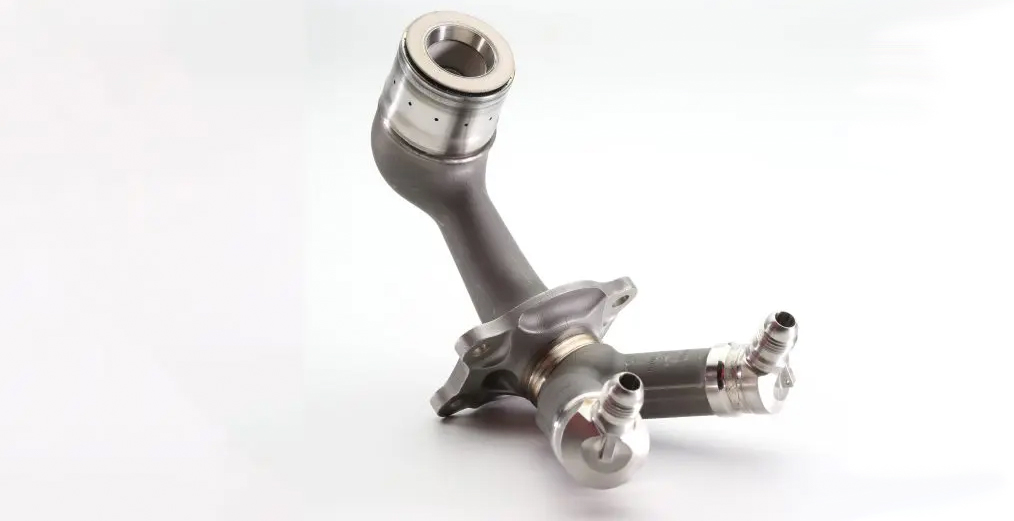
For example, the German Ministry for Economic Affairs and Energy notes that an Airbus A320 aircraft can save more than 2,600 gallons of fuel per year if its weight is reduced by a mere 200 pounds. GE Aviation, a major airplane engine and parts manufacturer, notes that every pound eliminated on a Boeing 737 aircraft reduces annual operation costs by hundreds of thousands of dollars. U.S. automaker GM, as well, has been able to increase fuel efficiency in its cars by reducing their weight by hundreds of pounds. All of these manufacturers have turned to 3D printing to solve their weight problems.
In this article we’ll explore what lightweighting is and how additive manufacturing (3D printing) can be applied to produce parts that are not only lighter, but more efficiently designed and significantly stronger.
The Basics of Lightweighting
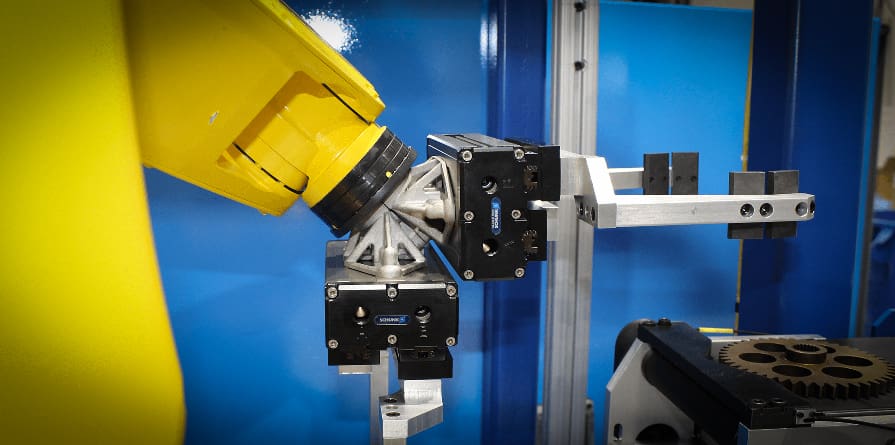
The most pressing issue that lightweighting seeks to address is waste. Whether that means wasting materials or money, or wasting a product’s potential through inefficient part design, the bottom line is the same – it all comes down to waste.
From a manufacturer’s perspective, material waste is the number one concern. More than 40% of manufacturing costs are tied to materials, and more efficient part design helps cut down on material consumption and lower costs. The 3D printing company EOS summarizes it well: Products should only consume the resources they need for proper functionality.
Not only does lightweighting reduce part cost, but also general material consumption. It’s increasingly beneficial for companies to incorporate environmentally-friendly business practices, and using less resources goes a long way to preserving the planet. Being eco-friendly can even be a requirement – an increasing number of countries are enacting ever stricter regulations regarding emissions and manufacturing practices.
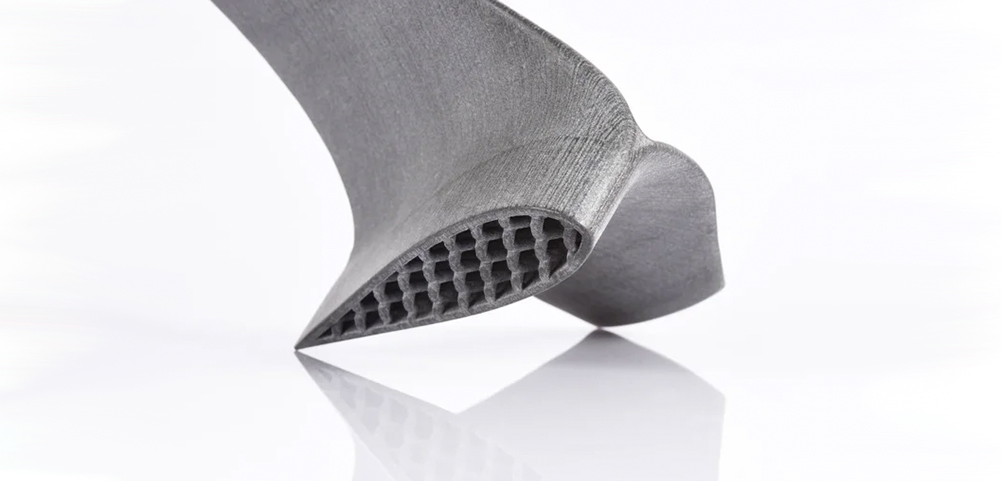
Manufacturers can also pass the cost savings in materials to the end user by being able to push down the price of the final product. Lightweighting benefits consumers elsewhere too – as mentioned, lighter vehicles get better mileage out of a full tank of gas.
The benefits of lightweighting can be summarized as:
- Lower material consumption and costs
- Potential to optimize part structure for higher performance
- Less waste is more environmentally friendly
- Better reputation among consumers
Practically any product can benefit from lightweighting, since a lower weight results to lower shipping costs. As such it is applicable to nearly every industry. However, the most enthusiastic companies can be found in the aerospace and automotive sectors.
It’s easy to see why – reducing the weight of an airplane, spacecraft, or vehicle also reduces fuel consumption. This translates directly to savings in operating costs, and the resulting potential uptick in sales can quickly offset the expenses of the lightweighting process.
Lightweighting in these sectors is even more crucial due to the recent emergence of electric vehicles. As it stands, electric vehicles don’t reach the same peak speeds as those with combustion engines. Making these vehicles lighter will improve the efficiency of the engine, and help bridge the gap between the two vehicle types.
Design Freedom for Lightweighting
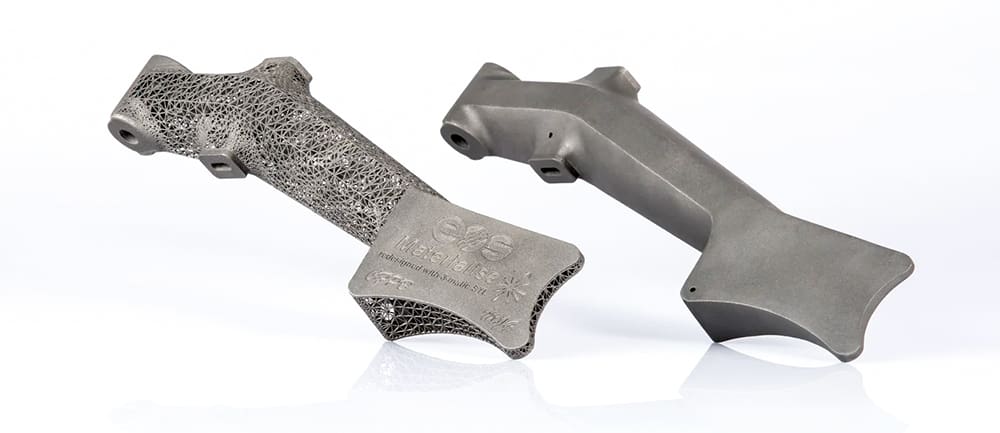
Lightweighting can be an expensive and time-consuming process with traditional manufacturing methods. That’s why companies are increasingly turning to additive manufacturing when they’re looking to reduce the weight of their parts.
The key advantage 3D printing brings to the table is design freedom. 3D printing is able to create complex geometries that are either prohibitively difficult and expensive to achieve with traditional manufacturing – if they can be produced at all.
In general, 3D printing enables lightweighting through three methods:
- Materials substitution
- Material reduction
- Part consolidation
Material substitution allows manufacturers to replace a part’s material with another one that is lighter but offers similar strength and other mechanical properties. A good example of this is the ongoing trend in the automotive industry of replacing parts made of steel or other metals with those made of carbon fiber.
Substitution has a long tradition in industry, and in many cases, it has reached its logical conclusion with no further material options available. However, as new materials are constantly being developed, material substitution will continue to have an important role in lightweighting.
Material reduction involves eliminating as much material as possible from the part while still keeping the same functionality. Topology optimization is an integral part of material reduction.
Essentially, manufacturers use computer software to discover part geometries that consume the smallest possible amount of material while still offering similar or superior performance. This process also involves a principle known as generative design. Manufacturers use AI-powered programs that run through countless simulated design iterations based on the given material and performance characteristics, before outputting the most optimal design alternatives.

Another popular method to reduce material is to turn previously solid geometries into hollow ones, or ones supported by an internal lattice structure. Such parts are impossible to create with traditional manufacturing methods.
Part consolidation condenses several separate components into a single part that retains or improves the previous design’s functionality. This lightweighting process is often possible only through 3D printing because traditional manufacturing is often incapable of producing complex features, such as curved internal channels or lattice structure infill.
3D Printed Lightweighting in Practice
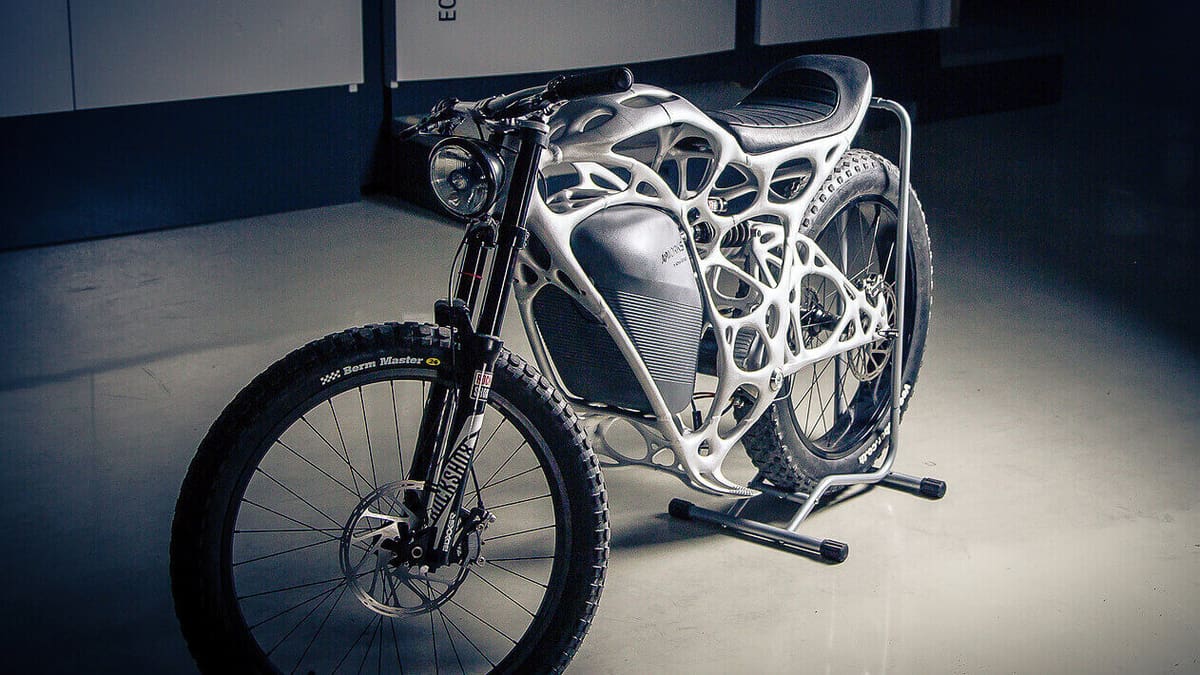
Now that we understand how 3D printing enables lightweighting, let’s take a look at some real-life cases where major manufacturers have successfully applied these principles into practice.
Material Substitution
Airbus’ subsidiary APWorks developed Scalmalloy, a unique aluminum alloy for additive manufacturing, that combines the lightness of aluminum with the high strength of titanium, while also providing excellent corrosion resistance. Scalmalloy is used in a wide range of highly loaded functional applications in aerospace and motorsport.
APWorks showcased the material with the Light Rider, a 3D printed motorcycle prototype. Combined with a skeletal frame, developed using the principles of biomimicry, APWorks claims the bike is 30% lighter than ones produced through traditional manufacturing. “The complex and branched hollow structure couldn’t have been produced using conventional production technologies such as milling or welding,” said Joachim Zettler, CEO of APWorks.
Earlier this year ExOne announced it will 3D print lightweight ceramic-metal parts using a patented additive manufacturing process to create a range of objects useful in deflecting or absorbing energy, which can protect people and the environment from radiation.
The development is significant because aluminum-infused boron carbide has strong but lightweight properties, as well as neutron-absorbing characteristics that are particularly useful in neutron scattering instruments, which enable researchers to capture data down to the atomic level. Using traditional methods, manufacturers face limitations in the shapes of instruments they can produce, which also limits the type of research and other work that could be done with them.
Luxury car maker Lamborghini and Californian 3D printing technology company Carbon have partnered to produce lighter and higher quality parts from Carbon’s Epoxy 82 material. Lamborghini has redesigned many of the interior and accessory parts in its cars using the material, which Carbon says is capable of withstanding high pressures and has the high impact strength needed in car applications. Ford also uses the same material in parts including HVAC lever arms and parking brake brackets.
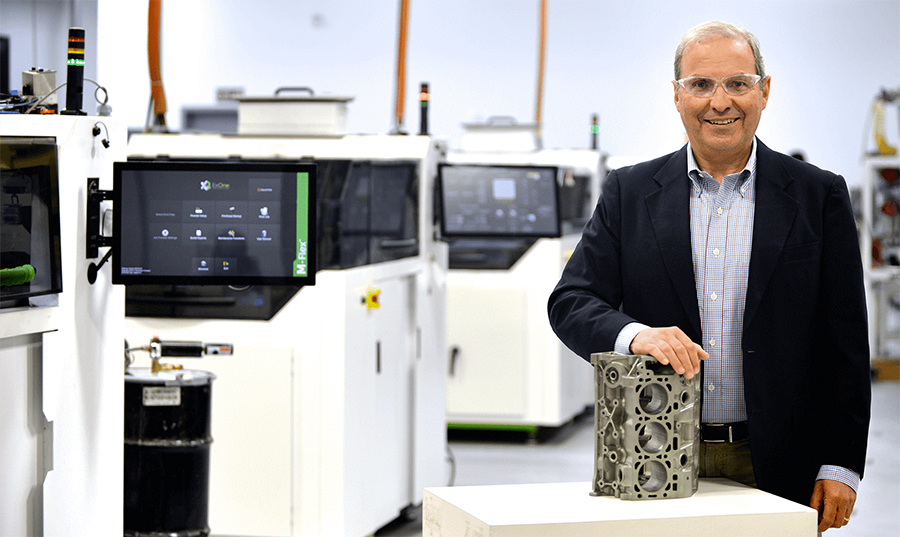
Material Reduction
When it comes to material reduction, there are many great examples of how 3D printing enables lighter parts. Let’s begin with GE Aviation that was looking to reduce the weight of an aircraft bracket while maintaining its functional strength.
3D printing company 3D systems answered the challenge by using a design software by Frustum to perform topology optimization on the part. After the program’s automatic process had optimized the part’s geometries over half a million builds, 3D systems printed a prototype in titanium with its ProX DMP 320 machine.
The final part conformed to the same footprint as the original, but reduced its weight by a whopping 70%. This case showcases the significant weight reduction opportunities that are possible simply through optimizing a part’s geometry.
In a similar case, additive manufacturing firm EOS collaborated with Swiss technology company RUAG to develop a new, extremely lightweight and robust antenna bracket for satellites. EOS ran the original, solid-walled part through a topology optimization process, which resulted in a more organic-looking frame design.
The final part, 3D printed using EOS Aluminum AlSi10Mg alloy, exceeded minimum rigidity requirements by more than 30%. Not only that, its weight was reduced by more than 40%, resulting in a lightweight part that can withstand even the most turbulent rocket launch.
Material reduction is not all about vehicle applications, though. Industrial 3D printer provider ExOne teamed up with a manufacturer of automotive parts to develop a new end-of-arm tooling attachment.
Using generative design, ExOne developed and printed a stainless steel part that was lightweight (only 95 grams) and cheap to produce. The part, printed using ExOne’s binder jet technology, cost only $150, compared to $672 if the part had been printed using powder bed fusion.
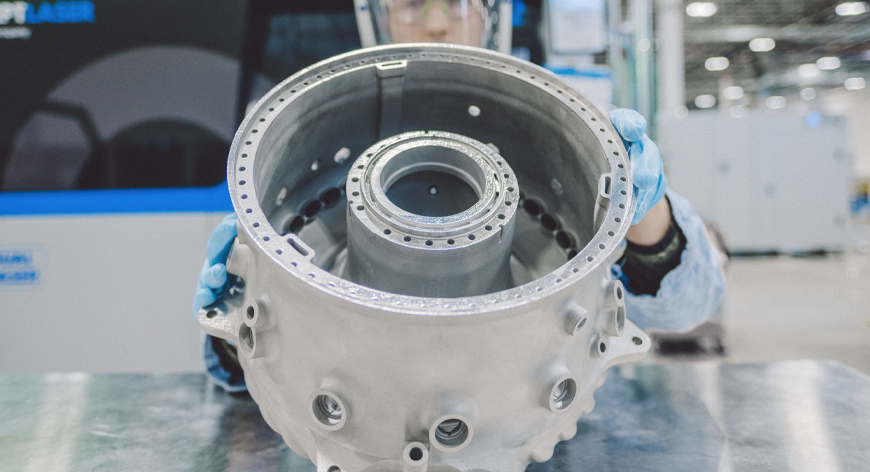
Part Consolidation
Part consolidation processes allow manufacturers to bring several parts into one, significantly reducing weight and costs. This is exemplified well in the collaboration between American automaker GM and Autodesk.
GM applied Autodesk’s generative design technology to a seat bracket, bringing eight parts into one through more than 150 AI-generated design iterations. The final 3D printed bracket was not only 40% lighter than the multi-part design, but also 20% stronger due to optimized geometry and lack of joints.
All in all, similar 3D printing solutions have helped GE massively reduce the weight of its vehicles. For example, the 2019 Chevrolet Silverado shed a massive 450 pounds off of its total weight, thanks to additive manufacturing technologies.
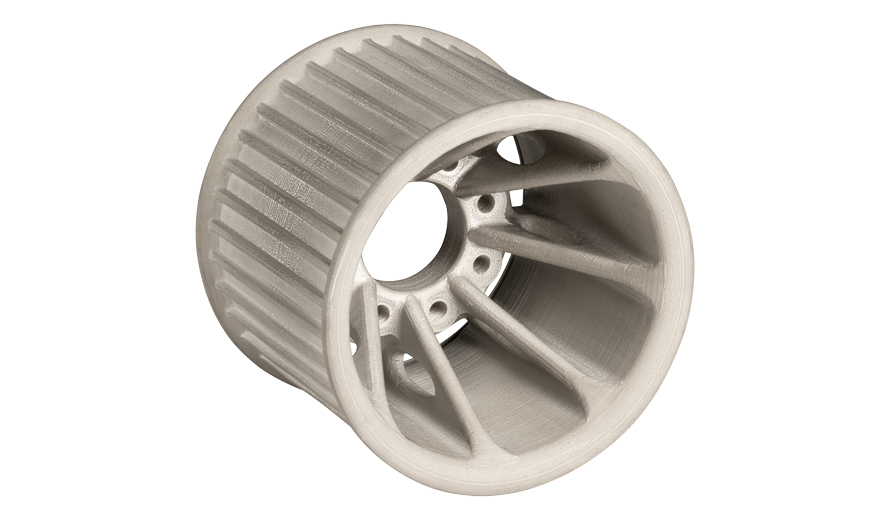
In the aerospace sector, German-Swiss equipment manufacturer Liebherr produced a 3D printed spoiler actuator valve for Airbus. The part ended up being the first 3D printed primary flight control hydraulic component incorporated into the A380 – the world’s largest passenger airliner.
The printed valve, printed with titanium powder, offers identical functional performance to the previous part, manufactured through titanium forging. However, it contains fewer separate parts, resulting in a 35% weight reduction and significantly reduced material waste in the manufacturing process.
Similarly, GE Aviation developed a metal 3D printed fuel nozzle tip for its LEAP aircraft engine, used in – among others – Boeing 737 Max passenger jets. The design consolidated 20 separate, welded components into a single 3D printed part.
As a result, GE managed to reduce the fuel nozzle tip’s weight by a quarter. This development, together with others, gives the LEAP engine 15% better fuel efficiency than comparable CFM56 engines, says GE.
As the covered case studies demonstrate, lightweighting with 3D printing offers manufacturers undeniable cost-saving opportunities. Creating lighter components through material substitution, reduction, and part consolidation reduces material consumption and improves production efficiency. These savings can then be passed on to the consumer, both as a smaller price tag and in lower operation costs. At the same time, manufacturers will save valuable resources and cut down on waste, helping combat environmental degradation and carbon emissions.
Lead image source: Lead image features lightweighted parts from nTopology, Desktop Metal, and EOS
License: The text of "Lightweighting With Additive Manufacturing – Essentials" by All3DP Pro is licensed under a Creative Commons Attribution 4.0 International License.
